Sprint Out Passing: Move the Pocket for Success
- By Keith Grabowski
Why Sprint Out?
The sprint out game provides a diverse package that builds upon other components of the passing game. Overall, the concepts used in an offense can be adapted to fit the quarterback on the move.
Sprint out fits into any offense and any type of personnel grouping. It’s simple to teach and it gives an offense efficiency in moving the ball down the field.
Kevin Kelley, who spent the 2021 season as the head coach of FCS passing leader Presbyterian, starts by pointing out a flaw in the thought process that many coaches mention as why to not sprint out...that it “takes away half of the field.” His answer is simple. You aren't taking away half of the field because they have to cover the other half of the field.
The ability to move the pocket and the launch point of the quarterback can help create and attack holes in defensive coverage.
Moving the launch point certainly is a way to alleviate pressure and get the quarterback cleaner looks. For the offensive line, the movement will help them as well.
Protection
As mentioned, changing the launch point to deter pressure is a big benefit offered by the sprint out passing game. The protection is relatively simple and doesn’t require the refined technique of the dropback game. Where the dropback game protection forces an offensive lineman to deal with two-way go’s as well as having to be sound in twists and stunts, the movement of the pocket simplifies both technique and scheme.
Matt Drinkall, TE Coach at Army, begins with the understanding of protection being full-gap 7- man protection. He doesn’t like to call it turnback. He sets it up so there are two protecting the front side edge. His version of sprint out allows the QB to get on the move but be set up to throw which he feels gives a higher completion percentage, especially when moving to the opposite side of his throwing arm. Here’s how he does it.
With a spread set, the protection can be adapted to six-man with the single running back utilized to protect the front side edge.
Like Coach Drinkall, Eric Marty, now the offensive coordinator for the USFL Michigan Panthers doesn’t teach the protection as a turnback, and he never asks a lineman to reach a frontside defender. This philosophy makes it much easier for the offensive line. He explains how they protect against an even front with the single running back assigned to the frontside edge.
Concepts
The concepts for sprint out can be very simple and build off of each other. Coupled with some compliments, this is a segment of an offense that defensive coordinators will have to spend time planning to stop.
To start with, sprint out can be used from any type of formation 3x1, 2x2, 3x2, and 4x1. For Coach Kelley, it starts with something simple like a one-on-one to the single WR side. The safety is slid over and not in a great position to help. The WR will run and out-and-up but come back if he doesn’t beat the corner as illustrated below.
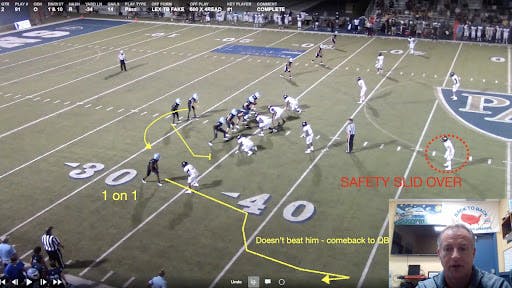
In this example, Coach Kelley moves the running back into empty to put him in a position to help on the edge. The same out-and-up with comeback rule is run.
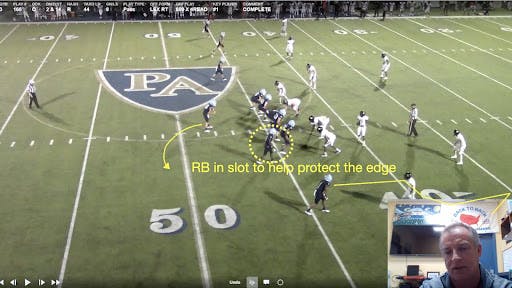
He illustrates the multiplicity of the concept and when run against looks that he shows is unstoppable when executed properly, Coach Kelley breaks down all of these examples in this video
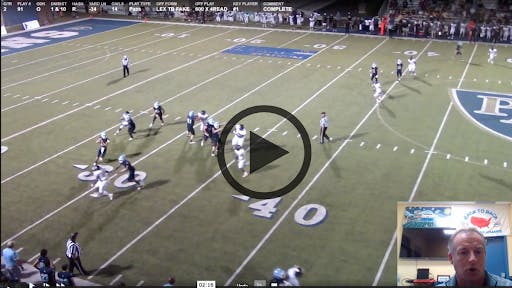
Once more receivers are added to the sprint out, the possibilities of how to attack the defense expand. Coach Drinkall likes to incorporate some form of smash with one route attacking vertically and another route attacking the flat. He explains his outside concept in this video.
Many offenses utilize the Snag concept which allows for a quicker timing from dropback as well as multiplicity from the types of 3-man surface formations and personnel groups. Coach Marty loves the concept as part of his sprint-out attack. Like Drinkall mentions, it does create a type of smash concept with a high-low to stretch the defense and attack zone coverage. It also creates some natural traffic for defenders to negotiate which makes it a great man-beater as well. He explains it here.
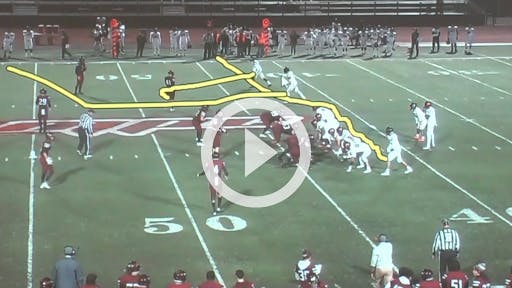
Those are just a few examples of how concepts can be adapted to sprint out. The idea is to be efficient in teaching so that dropback and sprintout concepts do not need to be exclusive to one category. The carry-over will cut down teaching and allow for route technique to be perfected.
Using Sprint Out Situationally
It fits into any field zone and virtually any down and distance. Bill Walsh made a living on Sprint Right Option with his Hall of Fame quarterbacks Joe Montana and Steve Young. Sprint right option is still a play that can be seen at every level of football. Many times it is a play reserved for the goal line area because it creates rubs and allows receivers to get open in an area with reduced vertical space. (see diagram below):
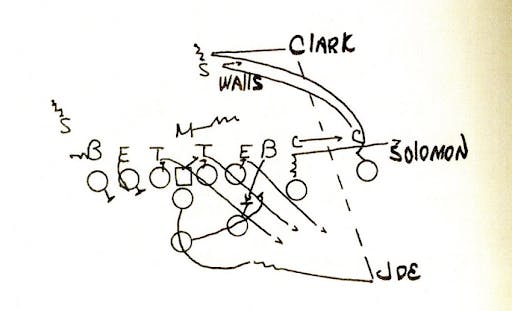
Coach Kelley carries an entire menu for this area of the field. He shares his variations in this video.
Complimentary plays
In general, any effective concept in an offense warrants the use of complimentary plays. Defenses work hard to take away effective plays thus opening opportunities to use other plays to exploit the weaknesses the defense creates to stop a concept.
Coach Drinkall thinks about how movement affects a defensive back who has to stop the sprint out and he creates concepts to take advantage of that.
His first idea is to tag a double move which takes advantage of an overplay by the defensive back. When the defender is jumping a corner route, utilizing a corner-post allows for a big play opportunity. Remember, in his version of the sprint out, the QB sets his feet to throw, thus making this a viable option. It would be much more difficult on the run for the QB. He illustrates it in this diagram.
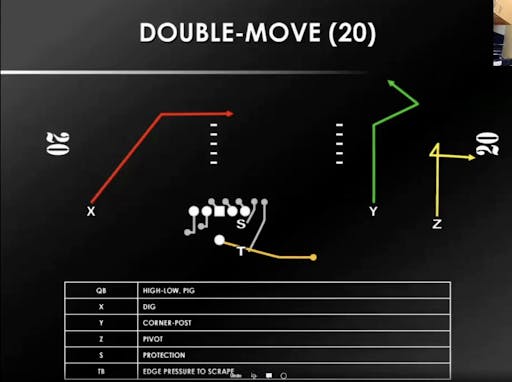
Compliments don’t have to be shot plays all of the time. Simply attacking the linebacker movement to the sprint out side creates opportunities for a short pass and run after catch with a drag or shallow.
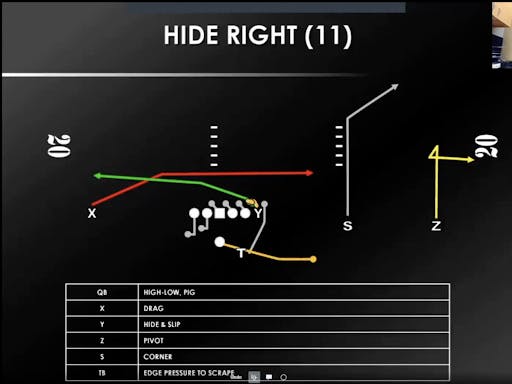
In addition, throwback screens, sprint draws, and even trick plays can be built off of the sprint out concept.
Conclusion
Changing the launch point is a smart way to take away the effectiveness of pressure. Because it can incorporate the concepts used in dropback, it’s an efficient way to provide the offense multiplicity. With a little thought, even a small package can be developed for an offense to realize these benefits.




No comments:
Post a Comment